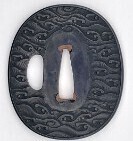With the caveat that you shouldn’t take legal advice from a forum post:
While copyright law varies across the world it would generally be a breach of copyright to reproduce something and share it, either in translation or not. It doesn’t matter if it is given away free or sold, except possibly in terms of how much you might end up being liable for, if you get sued. If you share it here, then the site might be exempt under the rule that sites are not held liable for posts by their users, but Brian could be asked to take it down, and non-compliance would leave him open to being sued too.
In educational settings you are allowed to reproduce up to 10%, or one chapter (whichever is lower), but that is because schools have an exemption for this.
Fair use is possible, but you would have to include a commentary on the work, where the work is only reproduced to illustrate your commentary.
I can’t tell you whether it is a good idea or not, but that is broadly what the law says (to my admittedly limited knowledge as a lecturer).



